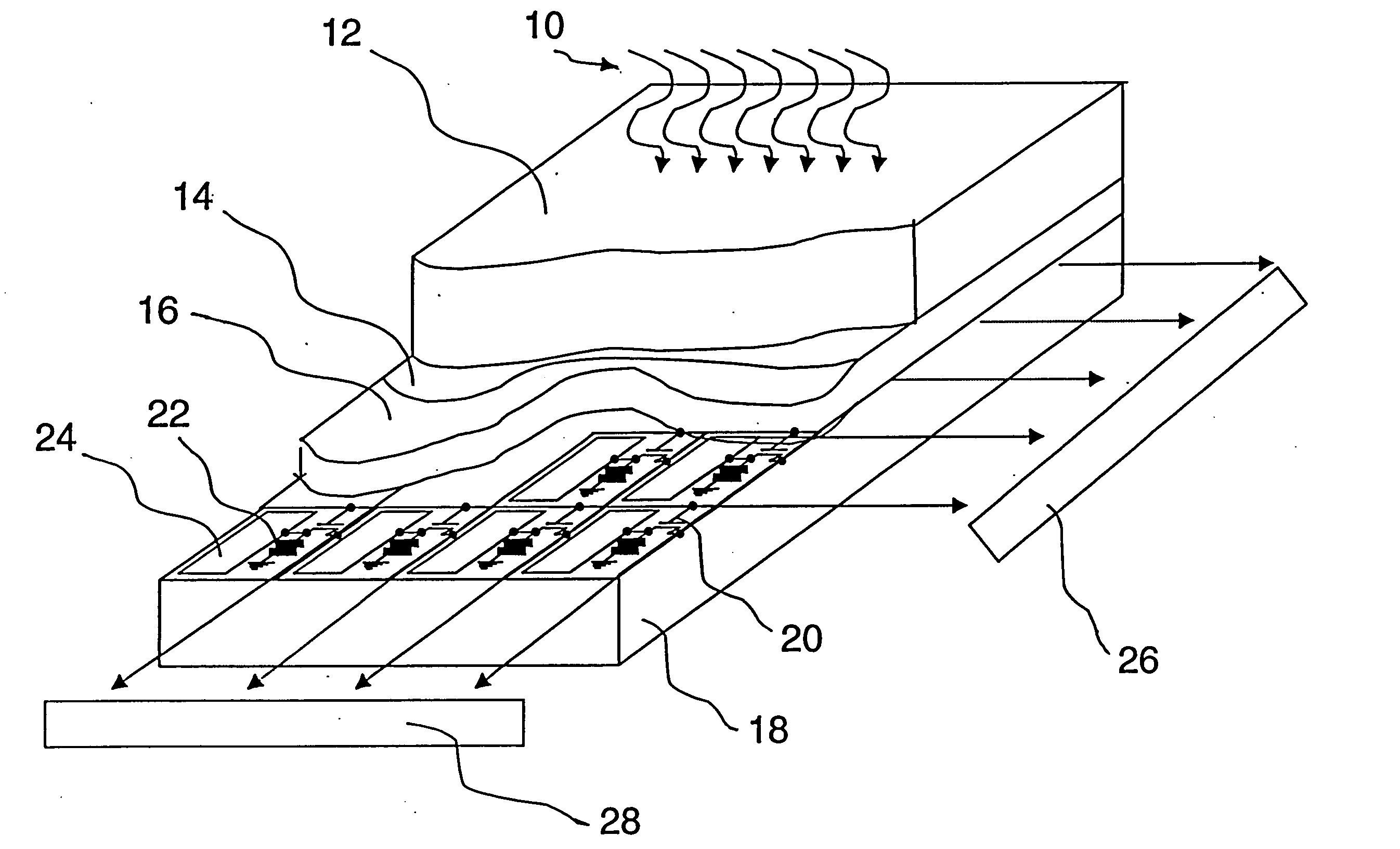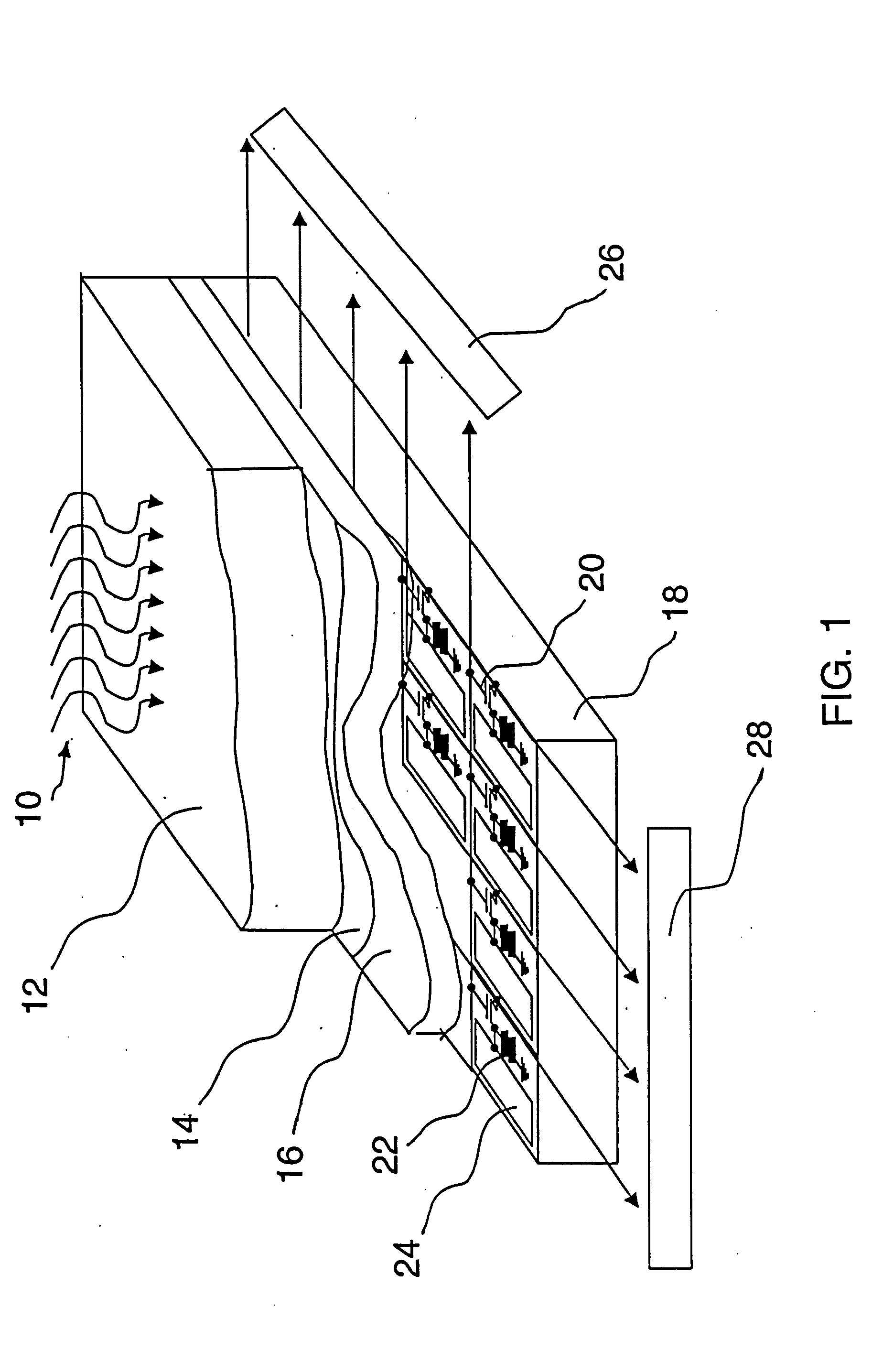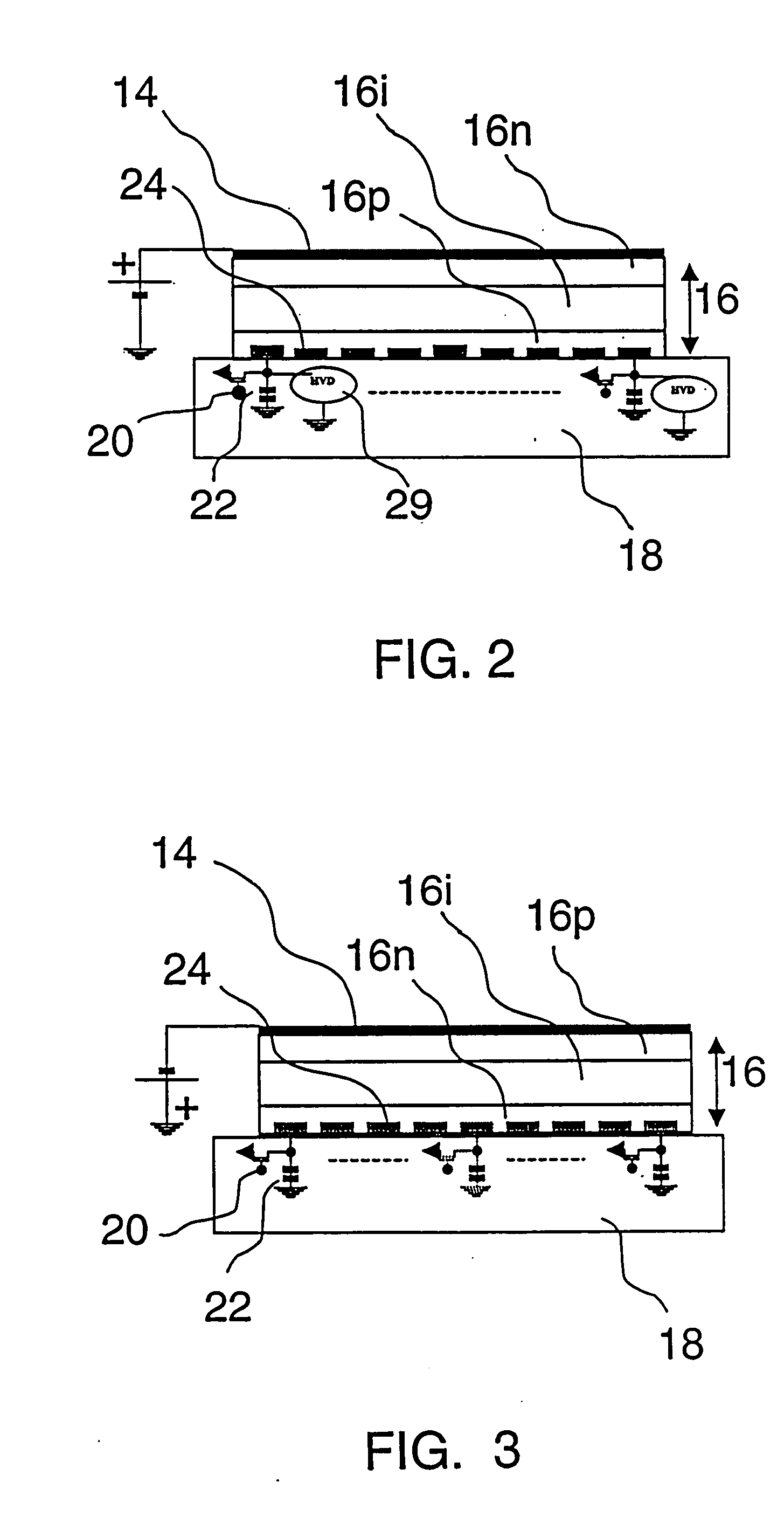Indirect x-ray image detector for radiology
a detector and x-ray technology, applied in the field of indirect x-ray image detectors, can solve the problems of limiting the field of use of the array of scintillators, high cost and poor resolution, and difficult task of building an array of scintillators
- Summary
- Abstract
- Description
- Claims
- Application Information
AI Technical Summary
Benefits of technology
Problems solved by technology
Method used
Image
Examples
Embodiment Construction
[0034] In the Figures, the same elements are identified by the same reference numbers.
[0035]FIG. 1 illustrates an embodiment of the present invention wherein an x-ray beam 10 is directed onto the x-ray conversion scintillator 12 which, for example, may be made of CsI. Such scintillator is typically 300-500 μm thick and it absorbs about 80% -90% of incoming radiation while converting x-rays into light. Under the scintillator 12, there is provided a light transparent top biasing electrode 14 which can be made of materials such as ITO. Under this biasing electrode 14, the present invention provides a co-planar thin (e.g. 5-20 μm) layer of photosensitive selenium based photoreceptor 16 having a multilayer structure which converts light into electrical charges. This photosensitive layer 16 is deposited onto an active matrix substrate 18 comprising arrays of TFT switches 20, storage capacitors 22 and conduction pads 24. Such TFTs may also be replaced by switching diodes (not shown).
[003...
PUM
 Login to View More
Login to View More Abstract
Description
Claims
Application Information
 Login to View More
Login to View More - R&D
- Intellectual Property
- Life Sciences
- Materials
- Tech Scout
- Unparalleled Data Quality
- Higher Quality Content
- 60% Fewer Hallucinations
Browse by: Latest US Patents, China's latest patents, Technical Efficacy Thesaurus, Application Domain, Technology Topic, Popular Technical Reports.
© 2025 PatSnap. All rights reserved.Legal|Privacy policy|Modern Slavery Act Transparency Statement|Sitemap|About US| Contact US: help@patsnap.com



